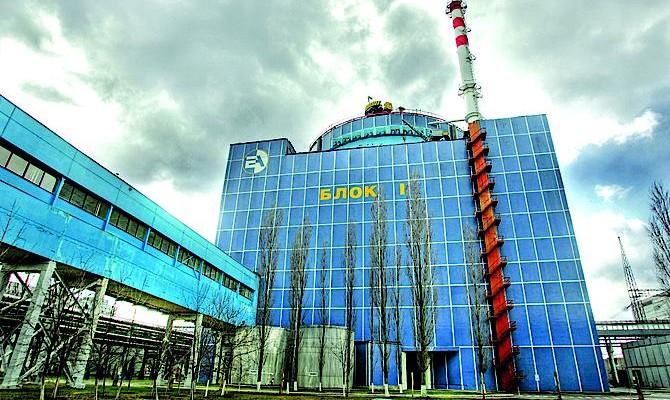Business
diversificationUkraine has plans to overcome its dependence on Russia in the nuclear power sector

The national nuclear power generating company Energoatom activated talks with western partners. Last Friday President of Energoatom Yuriy Nedashkovskiy said the Cabinet of Ministers supported the plan for the construction of new nuclear energy units using the nuclear reactors designed abroad.
Old friendship
In the past Ukraine stuck to its course towards Russia in the development of its atomic energy sector. Many components and nuclear fuel were supplied from Russia, while specialists were trained there to work at nuclear power plants (NPPs). “Today, we depend on one monopoly,” expert in atomic energy Bohdan Sokolovskiy confirmed to Capital. In the past Russia and Ukraine had a joint plan: to build a plant in the Kirovohrad oblast for the production of nuclear fuel and finish the construction of two energy units at the Khmelnytskiy NPP, which was launched during the Soviet era. At the same time, alternative non-Russian projects – the use of fuel of the U.S. company Westinghouse at Ukrainian reactors and the construction of a centralized reservoir of processed nuclear fuel of the U.S. company Holtec – were frozen.
Fuel from two ends
Orientation exclusively towards Russia did not benefit Ukraine’s nuclear power sector. Director of the Ukrainian Nuclear Forum Information and Public Communications Association Olha Kosharna explained that the terms of construction of a plant for the production of nuclear fuel within the framework of a joint Ukrainian-Russian enterprise envisaged that such a joint venture would acquire exclusive rights to the use of the technology, but not the technology itself. “For us this means that if the joint venture goes belly up, Ukraine will not be able to produce fuel based on this technology,” she said.
In addition to that, the cost of construction of the plant of US $462 mn is twice the cost of the construction of a similar plant in Kazakhstan jointly with the French company Areva. Moreover, the Kazakh enterprise would be supplied with fuel production technology.
The construction of the plant should have guaranteed Russia the Ukrainian nuclear fuel market. In June Senior Vice President of Commercial and International Cooperation at the TVEL fuel company (which is part of the state-run company Rosatom) admitted: after the launch of construction of the first line of the plant (initially it was planned for 2016) all Ukrainian NPPs should have been supplied exclusively with fuel produced by Russian technology.
Kosharna noted that on June 16 experts of the EU found a report in which it is written that of all global companies engaged in the production of nuclear reactors, only Rosatom fully associates the construction of new units with further supply of exclusively its own fuel. In connection with this the Ukrainian government pondered the idea of cooperation with other partners: Vice Minister of the Energy and Fuel Industry Vadym Ulida said last week that Ukraine is not satisfied with a number of terms in the agreement on the construction of the nuclear energy plant saying that Westinghouse or Areva might be attracted to the joint project insteadof the Russian company TVEL.
New blocs in a new location
The project for the completion of construction of the Unit 4 at the KhNPP, which was agreed to with Russia, also hit a dead end. Moreover, the Russian side failed to fulfill its obligations to supply preferential loans for the construction of these units to the tune of 85% of the cost of construction, Kosharna reminded.
After the accident at Fukushima in Japan and the tightening of safety requirements the building structures at the KhNPP where units were to be built no longer meet safety requirements. “The corresponding decision was adopted by the State Atomic Regulatory Agency in June 2013. The use of building structures at the KhNPP is impossible for construction of the units,” the expert noted.
Until recently, it was not clear whether this project would be revived. However, last week Nedashkovskiy informed that the Cabinet of Ministers supported the construction of new energy units according to western design. For this project new sites are being considered – the PivdennoUkrainska NPP (PUNPP) and the Zaporizhzhia NPP, where back in the Soviet era there were plans to build six and eight units respectively.
Currently, three units are operating at the PUNPP; six are operating at the ZNPP. The new projects are more pragmatic as unlike at the KhNPP those units are located closer to large industrial consumers of energy. Besides that, Nedashkovskiy is convinced that PUNPP has a major advantage: namely, its proximity to sea ports. “This is critical in the construction of western designed energy units at which the first contour equipment is not intended for transportation by rail due to the large bulk,” he said.
A la Europe
Ukraine’s aspirations to overcome the monopoly factor in the nuclear energy sphere corresponded to the last wave of European energy policy. Kosharna told Capital that back on May 7 that in Rome G7 countries agreed on the need to diversify the supply of not only oil and gas, but also nuclear fuel. On May 28 the European Union adopted a document pursuant to which all states that use reactors according to the Soviet design should diversify the supply of nuclear fuel and reduce their dependence on supplies from Russia.
However, it will be impossible to fully avoid the influence of Russia on Ukraine’s nuclear energy sector. Vice President of Ukraine’s Nuclear Society Serhiy Barabashev believes the terms of exploitation of the currently operating domestic NPPs will expire only after 2030. “For this reason, Ukraine will depend on Russian technology many years to come,” he assured.






 of the agreement of syndication with Financial Times Limited are strictly prohibited. Use of materials which refers to France-Presse, Reuters, Interfax-Ukraine, Ukrainian News, UNIAN agencies is strictly prohibited. Materials marked
of the agreement of syndication with Financial Times Limited are strictly prohibited. Use of materials which refers to France-Presse, Reuters, Interfax-Ukraine, Ukrainian News, UNIAN agencies is strictly prohibited. Materials marked  are published as advertisements.
are published as advertisements.